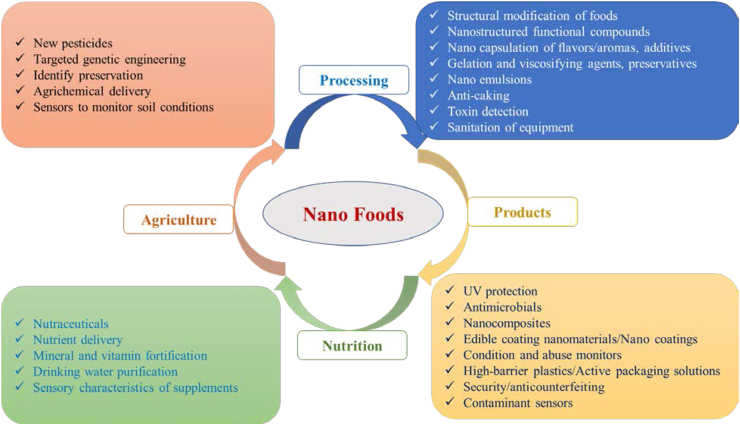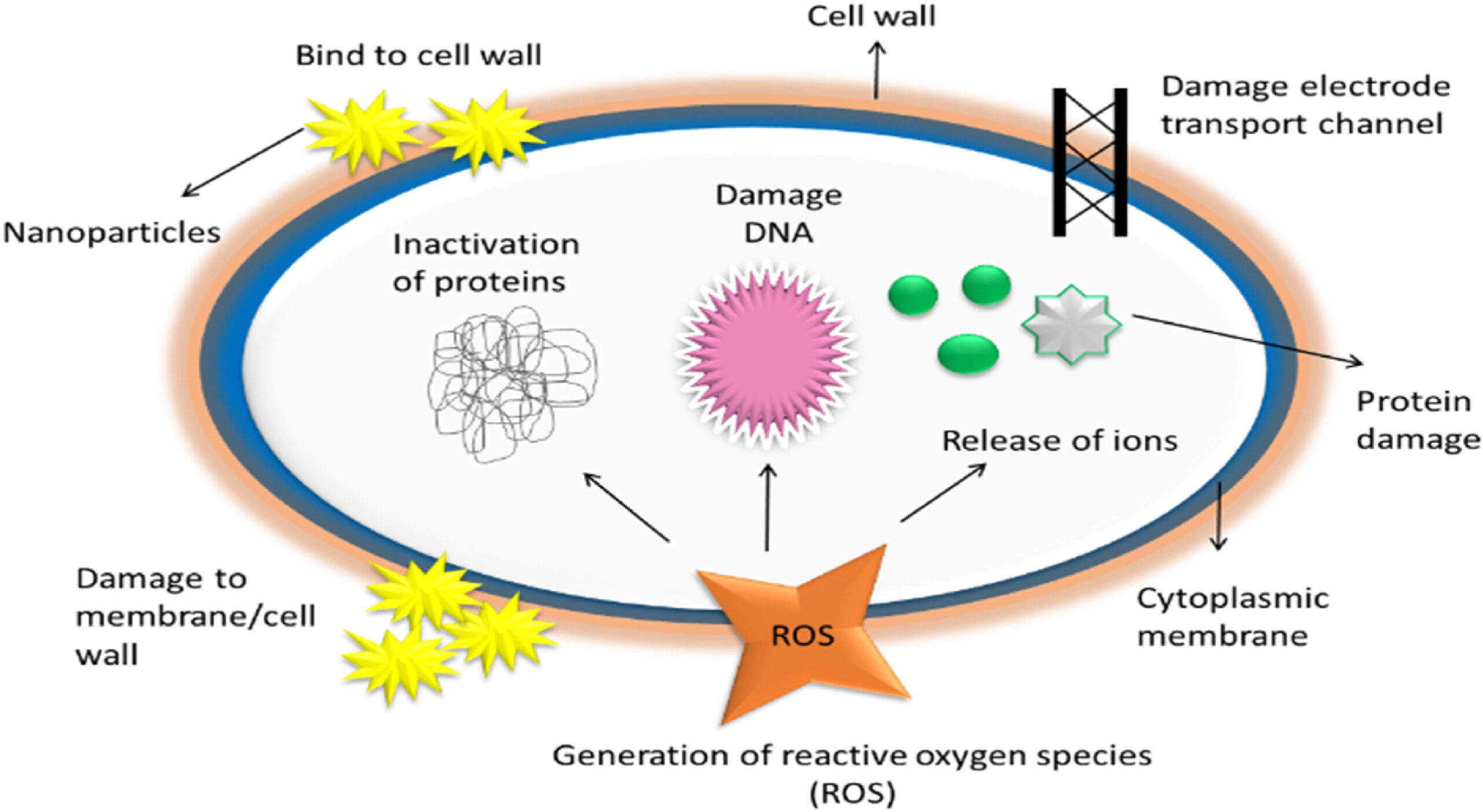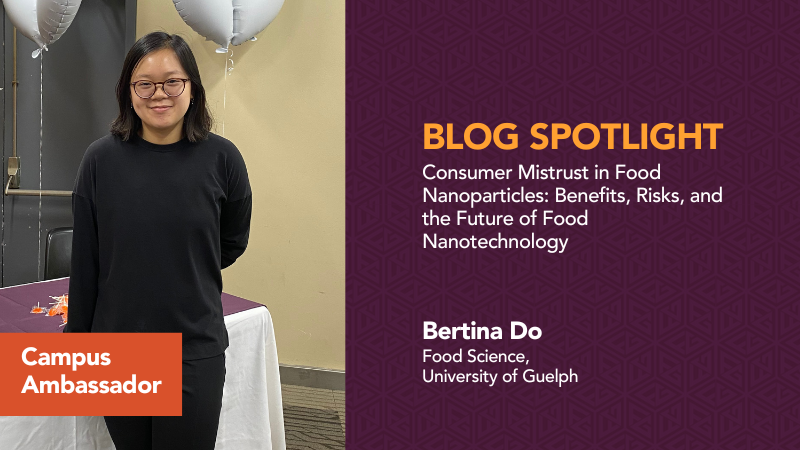Consumer Mistrust in Food Nanoparticles: Benefits, Risks & the Future
Last Updated on February 9, 2025
Nanoparticle innovation has ascended to popularity in the golden age of development, transforming food delivery systems and enhancing nutritional value. Nanoparticles are part of nanotechnology which refers to materials ranging from 1 to 100 nanometers in size. These particles can modify matter at the atomic and molecular levels. Therefore, nanoparticles promise plenty of multifunctional uses in food production balancing potential benefits for human health and convenience over their toxicological risks. However, the use of nanoparticles has been a subject of debate regarding their selective advantages versus disadvantages.
The Role of Nanoparticles in the Food Industry
To begin, nanoparticles serve various functionalities engineered to have a particular function, including thermal behaviour, solubility, and photolytic activity Nanoparticles have a high surface-to-volume ratio, which increases catalytic activity and enhances the performance of food additives and supplements.
In the food industry, nanoparticles have been integrated into food safety measures featuring applications such as nanoparticle sensors and nano-silver antimicrobials in food packaging. These nanoparticles are produced using biodegradable polymers, allowing for uses like the controlled release of medication or antioxidant release. Additionally, they can form liposomes and micelles which effectively bind to lipophilic or lipophobic medication using surfactants. The materials utilized are food-grade and produced in various forms including colloids, rods and powders.
Three main approaches to synthesizing nanomaterials can be classified into biological, chemical, and physical methods. Examples of the methods include cytotoxicity derived from plant extracts, sono-chemicals like micro-emulsions and phase vapour deposition for physical methods.

Feasible applications of nanotechnology in all fields including agriculture to food processing safety, packaging, and nutrition of food science (Duncan, 2011; Pathakoti et al., 2017; Sahoo et al., 2021).
The Advantages of Food Nanoparticles
On the upside, the greatest advantages of nanoparticles are that they are inexpensive and effective. For example, titanium dioxide is nontoxic and has been utilized as a photocatalyst for its antibacterial properties in water decontamination ultimately improving shelf-life. In addition, it is a whitening agent for food products like cheese.
Nanoparticles offer versatility in food applications helping to achieve the desired taste, texture, and packaging. Nanoencapsulation is coined as the idea of trapping bioactive molecules in any state of material within a matrix or non-reactive composition to enhance stability. The encapsulating materials can range from inert polysaccharide polymers like chitosan, monmorillonite, zinc oxide and more. These coated materials help with stabilizing the primary bioactive molecules against oxygen and light degradation, thus improving diffusion.
For example, nanoemulsions can enhance emulsification and structuring, leading to more stable and uniformly structured ice-creams. Along with its potential benefits, nanoencapsulation enables the supplementation of vitamins and enzymes. Lastly, it does not react with bioactive compounds and has no aftertaste.
The Risks of Nanoparticles in Food
Despite the rewards that come with nanotechnology, several drawbacks may harm human health. Current toxicology reports highlight negative consequences of nanoparticles, particularly their ability to accumulate pollutants in foods. Hence, it impacts the environment and human health. Nanoparticles could transfer to food items leading to the increased production of reactive oxygen species (ROS). ROS are known to cause cell damage and oxidative stress. This process could undermine the effectiveness of antimicrobials and antioxidants put into the active packing components.
The potential harm caused by nanoparticles, often referred to as nanotoxicity raises important issues surrounding bioaccumulation that may cause damage in human organs such as lung damage. Additionally, there is growing evidence suggesting possible genotoxic and carcinogenic effects. Consequently, some nanoparticles have been banned in various regions, including parts of Europe.

Fig. 3. Schematic representation of nanoparticle interaction on microbial cells. (Ashfaq, A. et al. (2022))
The Future of Nanotechnology in Food
The future of nanoscience promises more advancements that can benefit the food industry particularly in the areas of nutraceuticals, food safety and manufacturing. The best benefit would be the preservation of the bioactive compounds that help with protection in adverse conditions to help release compounds during metabolism and solubility to enhance dietary intake.
Also, incorporating better homogeneity of products to help make low-calorie items. As for the food safety aspects, toxin detection and food spoilage could be found with carbon nanotubes in packaging. Nanoparticles have been shown to alter the texture of foods to achieve desired mouth feels while nanoencapsulation may mask undesirable tastes – such as bitterness- or serve as a potential alternative to replace nitrites in deli meats.
Conclusion: Balancing Innovation with Safety
In conclusion, while nanoparticles are questionable in toxicology research and environmental concerns, they play an important role in the food industry. Critics may argue that nanoparticles have detrimental effects that outweigh their benefits in foods. However, advancements in nanotechnology continue to enhance food quality, safety, and manufacturing. which surpass the lackluster claims these criticisms regarding oxidative stress and genetic malfunction. Furthermore, nanoparticles are expected to evolve over time and will be subject to regulation by governmental bodies to ensure safety and reduce consumer doubt.



leave your comment